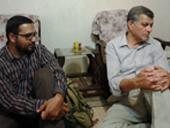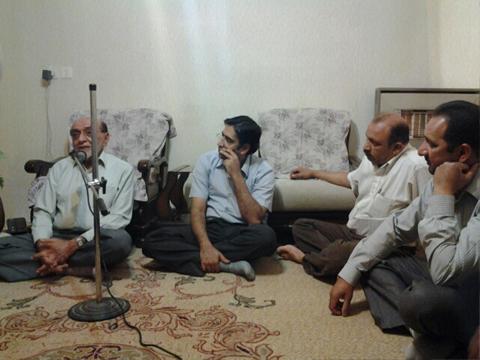 |
On 5th October, 2014, Al-Haj Hassanbhai Jaffer and Sheikh Kumail Rajani (Joint Head of Khoja Heritage Project and Head of Islamic Education Department) visited Shiraz to meet the community members residing in Shiraz. |
Shiraz is the fifth most populous city of Iran and the capital of Fars Province. It is regarded as one of the oldest cities of ancient Persia. The city is very well connected to the other cities via Air, Road and Rail network. Persepolis, the ancient capital of Iran during the Zoroaster period is located near Shiraz. Shiraz is known as the city of poets, literature and flowers. It has had major Jewish and Christian communities. Shiraz is dominated by cement production, sugar, fertilizers, textile products, wood products, metalwork and rug manufacturing industries. It also has a major oil refinery and is a major centre for Iran's electronic industries.
There are 3 Khoja families (around 70 individuals) in Shiraz, i.e. Humai (Hemani), Makani (Makwani) and Ali Bahoy family. These families are settled in Iran since long time and have acquired Iranian nationality. There is growing intermarriage of boys and girls marrying into the Iranian society and members of the community are fully assimilated with the local society as local nationals. Elders among them speak Gujarati and hold typical Khoja style gatherings for Majlis and Dua programs in their homes, followed by social discussions of common interest – shades of early Khoja settlement in Africa, Europe and North America! To cater for the cross section of the participants, Farsi is the common means of communication. As in Europe and North America, youngsters born and brought up in Iran are unable to read, write and speak in Gujarati.
For over a century now, members of the Khoja community are known to have initially settled in Basra (Iraq), Khourramshahar, and Tehran (Iran) trading locally and with the Indian sub-continent and Africa. Following the Iran/Iraq war in 1980s, they were dislocated to resettle in Shiraz, Tehran and Mashhad. While no census has been carried out in recent times, it is estimated that total Khoja population in Iran would be around 200 heads. Add to this number of around 160 Khoja students and their families from all over the world studying in Iran, the total number Khoja S.I. in Iran would be around 400.
Al-Haj Hassan Jaffer commented:
Our focus of attention as a community hitherto has been to keep contacts with the community members in Africa, Indo-Pak sub-continent and Europe and North America. With our structured community set up and the modern means of communication now available, we have to reach out to the widely scattered communities in the Middle East, Far East and Australasia also. Khoja Heritage project provides an avenue that we all must join forces to help develop. While in Shiraz, we participated in a marriage reception of a local Khoja girl married to an Iranian boy. An interesting case worth siting here is of a Khoja girl from Shiraz married to a Khoja boy from Toronto a month earlier!
The visit was conducted with the following objectives:
a. To identify the local communities round the globe as a part of Khoja Heritage Project
b. To see any potential avenues to work closely with them
Sheikh Kumail Rajani overwhelmingly shared that: “It was so nice meeting our community brothers and sisters in Shiraz. It’s a vibrant community and the youths were eager to be part of a global Khoja community. Because of the distance, so far it has been isolated. Taking this agenda forward, the Khoja Heritage project would strive to explore other areas where our community members have chosen to settle in and become national of those lands.”
|
Al-Haj Hassanbhai Jaffer addressing the community on the importance of the upbringing the children |




